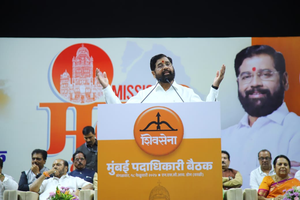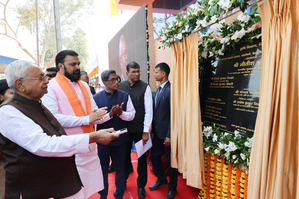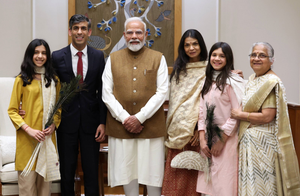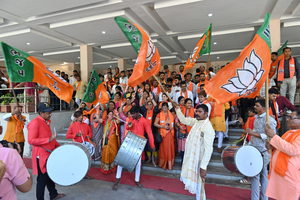Over 200 farmers in Haryana participate to end stubble burning
Chandigarh, Oct 27 (IANS) Over 200 farmers, government officials and industry members on Friday participated in a farmer outreach event in the Rania block in Haryana to strengthen the efforts to end stubble burning in the area.
The event was organised by the CII, which is supporting field initiatives in 430 villages in Punjab and Haryana promoting alternatives to stubble burning through awareness sessions, machinery support and technical training.
The event was supported by Apraava Energy which is partnering with CII in its crop residue management initiative in Haryana.
CII and Apraava have been working on crop residue management in the Sirsa district since 2019 and have adopted 26 villages covering 33,770 acres of land and 6,795 farmers.
Overall, in Haryana CII has adopted 77 villages in partnership with corporate, including Apraava Energy, SBI Card, ONGC and Birlasoft, where six custom hiring centers with 240 machines have been set up which are managed by farmer’s cooperatives formed by CII.
In 2022, incidents of stubble burning were reduced significantly in the 26 intervened villages in Sirsa due to the project interventions as hundreds of farmers joined the project to create a zero-stubble burning movement.
While the focus of interventions till last year was on in-situ measures, in the current season, village-level ex-situ interventions for the management of straw are also being promoted by CII in Sirsa.
A key highlight of the event was the inauguration of a biogas unit and a straw-based compost unit by Ranjeet Singh, Minister for Power, and Sunita Duggal, Member of Parliament, Sirsa.
Three other biogas units in Sirsa and Fatehabad are already operational and can use 1.6 MT of biomass of straw and .4 MT of cow dung for a three-month cycle and turn it into cooking gas sufficient for a small family.
The straw-based compost unit has a capacity of turning 16 MT of paddy straw into 32 MT of compost per month which will be ready to use by farmers in 30-35 days after a two-stage solid-state digestion.
Speaking at the event, Ranjeet Singh said. “Due to stubble burning, we have lost a lot of flora and fauna from the villages and we are harming nature and nature is reverting it in the form of earthquakes and floods.
“People are moving out of Delhi due to the poor air quality and its impact on children and older generation and a new trend of farmhouses has started.”
He urged farmers to adopt environmentally sustainable alternatives to stubble burning to stop the damage.
Highlighting the negative impact of stubble burning, Sunita Duggal said a soil health laboratory has been started in the district and all farmers should test their samples to get benefits from it.
Farmers shared their experiences at the event as part of a peer-to-peer learning effort to encourage other farmers to join the movement of zero-stubble burning.
To help curb the effects of stubble burning, Birlasoft, part of the $2.4 billion diversified CK Birla Group, has set up an initiative called Project Shodhan in 2017 with the aim of achieving zero crop residue burning in villages of Punjab, Haryana, Uttar Pradesh, and Rajasthan.
The Confederation of Indian Industry (CII) Foundation and Birlasoft had signed an MoU towards the third phase of Shodhan, focused on introducing alternate solutions to manage crop residue and create awareness on the ills of stubble burning.
A notable impact from the project is that stubble burning was checked in 90 per cent farm area and there was a 5-7 per cent increase in yield as of 2020-21.
–IANS
vg/dan




